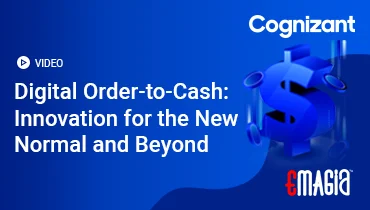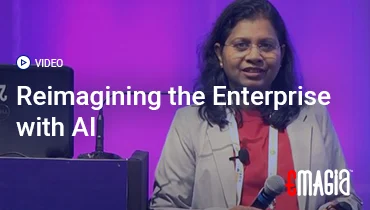In the intricate machinery of business, cash flow is the undisputed king. It fuels operations, enables investment, and dictates an organization’s ability to seize opportunities and navigate economic fluctuations. While sales figures and profit margins often capture the most attention, the true measure of financial health lies in a company’s efficiency at converting those sales into tangible cash. This critical aspect of financial management is quantified by a vital, yet often overlooked, process: cash application.
For many finance professionals, the cash application process can feel like a daily battle. It’s the laborious task of matching incoming customer payments to the correct outstanding invoices, frequently complicated by fragmented remittance advice, partial payments, deductions, and various payment methods. This manual burden leads to “unapplied cash,” delays in recognizing revenue, inflated Days Sales Outstanding (DSO), and a significant drain on valuable resources. The inefficiencies in this process directly impact a company’s liquidity, profitability, and even its customer relationships. The imperative for a clear, efficient cash application process flowchart has never been more pressing.
This comprehensive guide will delve deep into the concept of the Cash Application Process Flowchart, exploring its traditional steps, the challenges inherent in manual execution, and the transformative power of modern, intelligent solutions. We will visually break down the workflow, illuminate how leveraging automation and Artificial Intelligence can streamline each stage, and ultimately position your finance function for the demands of next generation finance. Join us as we uncover how mastering your cash application workflow can unlock unparalleled financial efficiency and strategic advantage for your business.
I. Understanding the Core: What is Cash Application?
Before we map out the process, let’s establish a clear understanding of cash application itself.
A. Defining Cash Application: The Bridge from Sale to Cash
Cash application is the critical accounting process of accurately matching incoming customer payments to their corresponding open invoices in a company’s Accounts Receivable (AR) ledger. Once a payment is received, the cash application team identifies which specific invoices the payment is intended to cover, applies the payment, and clears the outstanding balance. It’s a fundamental step in the Order-to-Cash (O2C) cycle, directly impacting the accuracy of financial statements and the speed of cash flow.
B. Its Critical Role in Accounts Receivable (AR) and the Order-to-Cash (O2C) Cycle
Cash application is the linchpin that connects sales to actual cash. Without efficient cash application, a business cannot accurately determine its true AR balance, track Days Sales Outstanding (DSO), or even properly recognize revenue. It directly impacts liquidity, credit management, and collections efforts.
C. Traditional Challenges: Manual Effort, Data Fragmentation, and Errors
Historically, the cash application process has been a major bottleneck due to:
- Fragmented Remittance Data: Payments arrive via various channels (checks, ACH, wires) with remittance advice often separate or in unstructured formats (emails, PDFs, web portals).
- Complex Matching Scenarios: Payments rarely match invoices perfectly, involving partial payments, overpayments, deductions, and consolidated payments for multiple invoices.
- High Manual Effort: Labor-intensive data extraction, matching, and entry consume significant time and resources.
- Human Error: Manual processes are prone to mistakes, leading to misapplied payments and reconciliation discrepancies.
These challenges highlight why a clear, optimized cash application process flowchart is vital.
II. The Traditional Cash Application Process Flowchart: A Step-by-Step Breakdown
Let’s visualize the typical manual or semi-manual cash application workflow that many businesses still follow.
A. Visualizing the Flow: A Conceptual Overview
Imagine a series of interconnected boxes and arrows, each representing a stage in the journey of a payment from receipt to final application. This cash application process flowchart helps identify bottlenecks and areas for improvement.
B. Step 1: Payment Receipt (The Inflow)
The process begins when a payment arrives. This can be in various forms:
- Physical Checks: Received via mail, often through a lockbox service or directly at the company.
- ACH Payments: Electronic transfers received through the Automated Clearing House network.
- Wire Transfers: Electronic transfers for high-value or urgent payments.
- Credit Card Payments: Processed through online gateways or POS systems.
Each payment method may have its own initial handling procedure.
C. Step 2: Remittance Advice Collection (The Information Gathering)
Crucial for matching, remittance advice provides details about which invoices a payment covers. This information arrives in various formats and channels:
- Emails: Often with attached PDFs or Excel files.
- Customer Portals: Remittance details accessed by logging into client-specific portals.
- EDI (Electronic Data Interchange): Structured electronic files for large B2B transactions.
- Paper Stubs: Attached to physical checks.
- Bank Statements: Limited details, often requiring further investigation.
Gathering this fragmented information is a major challenge in the cash application workflow.
D. Step 3: Data Extraction (The Manual Grind)
Once remittance advice is collected, relevant data must be extracted:
- Manual Keying: AR specialists manually read and type invoice numbers, amounts, and deduction reasons into the accounting system.
- Basic OCR: Some companies use Optical Character Recognition (OCR) for scanned documents, but often requires significant manual correction for unstructured data.
This stage is highly prone to human error and is a significant time sink in the cash application process.
E. Step 4: Matching Payments to Invoices (The Puzzle)
This is the core of cash application, where the extracted payment data is matched against open invoices in the AR ledger:
- One-to-One Matches: Simple scenarios where a payment exactly matches a single invoice.
- Partial Payments: Payments less than the full invoice amount, requiring the remaining balance to be left open.
- Overpayments: Payments exceeding the invoice amount, requiring a credit balance or refund.
- Consolidated Payments: A single payment covering multiple invoices, often across different entities or departments.
- Deductions: Payments where the customer has reduced the amount due to a dispute, return, or allowance. These require coding and often separate workflows.
- No Remittance: Payments received without any clear indication of which invoices they cover, leading to “unapplied cash.”
Complex matching scenarios are a major challenge in a manual cash application process.
F. Step 5: Exception Handling (The Investigation)
Any payment that cannot be automatically matched or has discrepancies becomes an “exception.” This requires manual intervention:
- Research and Investigation: AR specialists research the reason for the mismatch, often contacting the customer or internal departments (sales, customer service).
- Deduction Resolution: For deductions, the reason must be validated, coded, and routed to the appropriate team for resolution (e.g., issuing a credit memo).
- Manual Adjustments: Once resolved, manual adjustments are made in the AR system.
This stage is highly resource-intensive and delays cash recognition.
G. Step 6: Posting to General Ledger/ERP (The Accounting Update)
Once payments are matched and exceptions handled, the applied cash is recorded in the company’s financial records:
- Manual Entry: Applied payments are manually entered into the General Ledger (GL) or ERP (Enterprise Resource Planning) system.
- Batch Processing: Payments are sometimes batched and uploaded to the GL/ERP at the end of the day or week.
H. Step 7: Bank Reconciliation (The Verification)
The final step involves reconciling the bank statement with the company’s internal records:
- Manual Matching: Bank statement entries are manually matched against the applied payments in the GL/ERP to ensure all transactions are accounted for.
- Identifying Discrepancies: Any unmatched items require further investigation.
This entire traditional cash application process flowchart highlights numerous points of inefficiency and potential error.
III. Why Optimize Your Cash Application Process Flowchart? The Business Impact
Streamlining this critical process delivers profound benefits across the organization.
A. Accelerated Cash Flow and Significant DSO Reduction
The most direct benefit: by speeding up the application of cash, businesses gain faster access to their funds. This directly improves liquidity, reduces Days Sales Outstanding (DSO), and ensures cash is available for operations, investments, or debt reduction much quicker. This is the goal of any cash application automation software.
B. Reduced Operational Costs and Increased Efficiency
Automating the labor-intensive tasks frees up cash application teams from tedious, repetitive work. This leads to substantial operational efficiencies, significantly lower labor costs, and allows personnel to focus on higher-value activities like resolving complex deductions or analyzing payment trends. This is the true power of automation of cash application.
C. Elimination of “Unapplied Cash” and Improved Accuracy
By ensuring payments are matched and applied promptly, businesses virtually eliminate “unapplied cash” (payments received but not yet matched to invoices). This results in cleaner, more reliable AR data, reducing reconciliation discrepancies and providing accurate financial statements. This is a key benefit of automatic cash application.
D. Enhanced Customer Experience and Stronger Relationships
Prompt and accurate application of payments means customers receive correct account statements and don’t get unnecessary collection calls for invoices they’ve already paid. This reduces customer frustration, builds trust, and fosters stronger relationships. This is crucial for cash application management.
E. Better Financial Visibility and Strategic Decision-Making
With clean, real-time data from an optimized cash application process flowchart, finance leaders gain accurate insights into payment behavior, cash flow trends, and customer payment patterns. This enables more informed, data-driven decisions regarding credit policies, collections strategies, and overall financial planning. This is often seen on a cash application dashboard.
F. Scalability for Growth
An optimized, automated cash application process can handle increasing transaction volumes and customer bases without requiring proportional increases in headcount. This allows businesses to scale their AR operations efficiently, supporting growth initiatives.
IV. Revolutionizing the Cash Application Process Flowchart with Automation and AI
Modern technology, particularly AI and automation, transforms every step of the cash application workflow.
A. Introduction to Automated Cash Application
Automated cash application refers to the use of technology to streamline and intelligentize the process of matching incoming payments to outstanding invoices. It moves beyond simple rule-based systems to leverage advanced AI and Machine Learning for highly accurate and efficient processing. This is the goal of ai powered cash application process.
B. The Intelligent Cash Application Process Flowchart: A Transformed Workflow
Here’s how automation and AI reshape the traditional flowchart:
- Step 1: Multi-Channel Data Ingestion (Automated): Payments and remittances are automatically collected from all sources (lockboxes, EDI, bank feeds, emails, web portals) into a central platform. This creates an automated cash application network.
- Step 2: AI-Powered Data Extraction (Intelligent Automation): Intelligent Document Processing (IDP), combining Optical Character Recognition (OCR) and Natural Language Processing (NLP), automatically extracts all relevant information from both structured and unstructured remittance advice. This eliminates manual data entry and research.
- Step 3: AI-Driven Matching Engine (High STP): Machine Learning algorithms, the core of AI cash, learn from historical payment patterns and customer behavior to achieve exceptionally high straight-through processing (STP) rates. They can intelligently match complex scenarios like partial payments, overpayments, consolidated remittances, and even automatically identify and code deductions. This is the heart of best cash application software solutions.
- Step 4: Automated Exception Handling & Routing: Payments that cannot be fully matched automatically are flagged as exceptions. AI provides contextual information to human reviewers and automatically routes these exceptions to the appropriate person or team for quick resolution. This streamlines the cash application management of complex cases.
- Step 5: Automated Posting & Real-time Updates: Once payments are matched and exceptions resolved, the system automatically posts the applied cash directly to the ERP or General Ledger in real-time. This ensures immediate updates to AR balances and financial statements.
- Step 6: Automated Bank Reconciliation: The system automatically reconciles bank statement entries with applied payments, flagging only true discrepancies for human review. This significantly reduces manual reconciliation effort.
This transformed cash application process flow is driven by intelligent automation.
V. Key Technologies Driving the Modern Cash Application Process Flowchart
Several advanced technologies underpin the efficiency of automated cash application.
A. Artificial Intelligence (AI) & Machine Learning (ML)
AI and ML are the brains behind intelligent matching. They enable the system to learn from vast amounts of data, recognize complex patterns, predict payment behaviors, and continuously improve matching accuracy over time. This is what makes an ai powered cash application process truly effective.
B. Intelligent Document Processing (IDP)
IDP, encompassing OCR and NLP, is crucial for handling the diverse and often unstructured formats of remittance advice. It allows the system to “read” and extract data from emails, PDFs, scanned images, and web portals, eliminating manual data entry. This is vital for check cash application and other varied payment types.
C. Robotic Process Automation (RPA)
RPA automates repetitive, rule-based tasks within the cash application workflow, such as logging into bank portals, downloading files, or initiating specific actions based on predefined triggers. While AI provides intelligence, RPA handles the execution of routine tasks.
D. Cloud-Based Platforms
Most modern cash application solutions are cloud-based, offering scalability, accessibility, and ease of integration. This allows businesses to deploy and manage the software without significant on-premise IT infrastructure.
E. API Integrations
Robust API (Application Programming Interface) integrations ensure seamless, real-time data flow between the cash application software and core systems like ERP, CRM, and banking platforms. This creates a truly automated cash application network.
VI. Implementing an Optimized Cash Application Process Flowchart: Best Practices
To achieve maximum value from an automated cash application solution, strategic implementation is key.
A. Assess Your Current Cash Application Workflow
Before implementing new software, thoroughly map out your existing cash application process flowchart. Identify all manual steps, bottlenecks, common errors, and sources of unapplied cash. This baseline will help you define success metrics and measure ROI.
B. Prioritize Data Quality and Integration
The success of any automated cash app system hinges on clean, comprehensive, and integrated data. Ensure your ERP, banking systems, and other relevant data sources are seamlessly connected and provide high-quality data to the cash application platform. Invest in data cleansing and standardization.
C. Adopt a Phased Implementation Approach
Consider a phased rollout, starting with automating the most common payment types or customer segments. This allows your team to learn, adapt, and build confidence in the new system, demonstrating early wins before scaling across the entire cash application function. This iterative process is key for effective adoption of automated cash application software.
D. Comprehensive Change Management and Training
Successful implementation depends on enthusiastic user adoption. Provide comprehensive, role-specific training for your cash application and finance teams. Emphasize how automation augments their roles, freeing them for more strategic work (like managing exceptions or analyzing trends), rather than replacing them. Foster a culture of continuous learning.
E. Continuous Monitoring and Optimization
An automated cash application provider solution is not a “set it and forget it” tool. Continuously monitor its performance, matching rates, and exception volumes. Provide feedback to the AI models to help them learn and improve. Regularly review and refine your cash application workflow based on performance data.
F. Choosing the Right Cash Application Solution
Select a vendor with proven expertise in cash application solutions, robust AI capabilities, seamless integration options, and strong customer support. Look for a solution that aligns with your business size, complexity, and growth aspirations. This is vital for finding the best cash application for your needs.
Emagia: Transforming Your Cash Application Process Flowchart with Autonomous Finance
Emagia’s core expertise lies in revolutionizing Accounts Receivable and the broader Order-to-Cash (O2C) processes through its AI-powered Autonomous Finance platform. Emagia is specifically engineered to intelligentize and automate every step of the Cash Application Process Flowchart, transforming it from a manual burden into a seamless, highly efficient, and strategic component of your cash flow management.
Emagia’s Intelligent Cash Application Cloud, GiaCASH AI, is at the forefront of this transformation. It is designed to tackle the most intricate payment scenarios by:
- Universal Remittance Data Ingestion: GiaCASH AI intelligently ingests payment data and remittance advice from virtually any source and format—including unstructured emails, diverse bank files, web portals, and even scanned checks. This eliminates the manual search for remittance, kickstarting the cash application process flow efficiently.
- AI-Powered Matching for Complex Scenarios: Leveraging advanced Machine Learning algorithms, GiaCASH AI automatically extracts critical information and matches these diverse incoming payments to outstanding invoices with unparalleled precision. It excels at complex scenarios like partial payments, overpayments, consolidated remittances across multiple entities, and payments with multiple deductions, achieving exceptionally high straight-through processing (STP) rates. This is the essence of automatic cash out cash app efficiency for businesses.
- Automated Deduction Identification and Routing: For payments with deductions, GiaCASH AI automatically identifies, categorizes, and routes these deductions to the appropriate internal teams for resolution, preventing them from becoming “unapplied cash” and streamlining the dispute resolution process.
- Seamless ERP Integration and Real-time Updates: GiaCASH AI integrates in real-time with major ERP systems (e.g., SAP, Oracle, NetSuite), ensuring that matched payments and resolved variations are automatically posted to the correct accounts. This provides a clean, accurate AR ledger and a clear cash application dashboard for monitoring.
By dramatically reducing unapplied cash, accelerating cash recognition, and freeing up valuable finance resources, Emagia Cash Application empowers businesses to achieve superior liquidity, reduce DSO, and gain unprecedented visibility into their cash flow. It transforms the traditional Cash Application Process Flowchart into a dynamic, intelligent, and highly efficient engine, positioning organizations for the demands of next generation finance and making it the best cash application software for optimizing this critical function.
Frequently Asked Questions (FAQs) About Cash Application Process Flowchart
What is a Cash Application Process Flowchart?
A Cash Application Process Flowchart is a visual representation that outlines the step-by-step workflow of how incoming customer payments are received, matched, and applied to outstanding invoices within a company’s Accounts Receivable system, from payment receipt to bank reconciliation.
Why is it important to optimize the Cash Application Process Flowchart?
Optimizing the Cash Application Process Flowchart is crucial for accelerating cash flow, reducing Days Sales Outstanding (DSO), minimizing operational costs, eliminating “unapplied cash,” improving data accuracy, enhancing customer experience, and gaining better financial visibility for strategic decision-making.
How does automated cash application change the traditional flowchart?
Automated cash application transforms the flowchart by introducing intelligent automation at every step. It automates data ingestion, uses AI for data extraction and matching (even for complex variations), streamlines exception handling, and enables real-time posting and automated bank reconciliation, significantly reducing manual effort.
What is “unapplied cash” and how does it relate to the cash application process?
“Unapplied cash” refers to customer payments that have been received but not yet matched and applied to specific outstanding invoices. It’s a common problem in manual cash application processes due to complex payment variations or missing remittance advice, leading to distorted AR balances and delayed cash recognition.
What technologies are used to automate the cash application process flow?
Key technologies used to automate the cash application process flow include Artificial Intelligence (AI) and Machine Learning (ML) for intelligent matching, Intelligent Document Processing (IDP) for data extraction from unstructured remittances, Robotic Process Automation (RPA) for routine tasks, and robust API integrations with ERP/banking systems.
Can cash application software handle partial payments and deductions?
Yes, modern cash application software, especially those with AI capabilities, are designed to intelligently handle complex payment variations like partial payments, overpayments, consolidated remittances, and deductions. They can automatically match these payments and even identify and route deduction reasons for resolution.
What are the benefits of an AI powered cash application process?
The benefits of an AI powered cash application process include exceptionally high straight-through processing (STP) rates, near-zero unapplied cash, real-time updates to AR, reduced manual effort and errors, faster cash recognition, and improved insights into payment behavior, leading to overall financial efficiency.
Conclusion: The Strategic Imperative of an Optimized Cash Application Flow
In the relentless pursuit of financial agility and operational excellence, understanding and optimizing the Cash Application Process Flowchart is no longer just an accounting task; it is a strategic imperative. The journey from invoice to cash, often fraught with manual bottlenecks and complexities, can be transformed into a seamless, highly efficient, and intelligent workflow through the strategic adoption of automation and Artificial Intelligence.
By embracing an automated cash application process, businesses can unlock unprecedented levels of efficiency, accelerate cash flow, virtually eliminate unapplied cash, and gain superior financial visibility. This investment empowers finance teams to move beyond transactional processing, contributing to more informed decision-making and positioning the organization for sustainable growth in the digital age. Mastering your cash application process flowchart is a fundamental step towards achieving the financial clarity and strategic advantage demanded by next generation finance.



